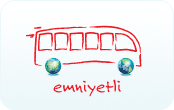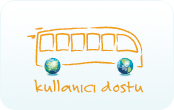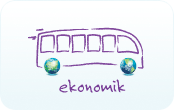|
Home  Verimli Verimli  Practical Solutions Practical Solutions
Marketing
|
| Passenger focus group | In-depth market research helps to find out what customers desire and can be used for the customisation of transport services. One way of doing this is with passenger focus groups. Passenger focus groups consist of representative customers and moderators. Transport issues are jointly discussed, feedback is given, brainstorming is done, solutions are presented and examined and finally an agreement is reached on the most important measures to be taken. Example: Passenger focus groups are used in Berlin for receiving feedback on new mobility and travel measures which have been introduced. During numerous meetings, different stakeholders have the opportunity to express their views on initiatives Berlin is planning to realise for better and cleaner transport. | For more information: CIVITAS in Europe, A proven framework for progress in urban mobility, p.20
http://civitas.eu/docs1/CIVITAS_D8_Final.pdf | Marketing segmentation and customisation | Market segmentation aims at groups of people according to demographics, behaviour, travel patterns or other factors. In many cases the segmentation of markets is an optimal response to customers’ needs. This is done through customisation of bus routes, schedules, vehicle types and much more. For example, increasing bus frequency and modifying bus routes during peak hours may attract more commuters going to work to business districts to take the bus in the morning, while pensioners using the buses during the day require more bus stops and different routings. Example: The bus route between Spondon and Derby was adapted to the needs of the majority of passengers in terms of routing. The frequency was also increased to every 10 minutes, which resulted in an increase from 6000 to 13 500 passengers per week. | For more information: Knowledge base about your (potential) customers, PROCEED, Austrian Mobility Research
http://www.fgm.at/proceed/index.phtml?id=43 Busfacts, Institut für Angewandte Wirtschaftsforschung und Regionalanalyse, p.14 | Mobility Management | Mobility management helps convince the public to change their travel behaviour through the development of strategies and actions for fulfilling the transport needs of companies, institutions and individuals. Mobility management activities are often seen as “soft measures” and include new possibilities of managing mobility demand, such as travel plans and awareness campaigns. Example: Through company mobility plans, Nantes is promoting the use of collective/public transport. The project involves approximately 2 200 municipal employees and 11 000 private sector employees, as well as the business community. The new travel plans are aimed at a 50% reduction of fares for the public transport of employees possessing annual passes and the removal of employee car parking spaces. | For more information: Sustainable Urban Transport, Final report from the European project Trendsetter, pp. 38-40
http://www.civitas-initiative.org/docs1/CIVITAS_TRENDSETTER_Final_Policy_Report.pdf CIVITAS in Europe, A proven framework for progress in urban mobility, pp.17-19
http://civitas.eu/docs1/CIVITAS_D8_Final.pdf Greener Journeys, Make the switch to bus and coach, p.2
http://www.arrivabus.co.uk/uploadedFiles/Resources/Global/Greener%20Journeys%20pamphlet.pdf | |
|
|
|
|
|
|
|














